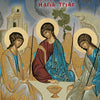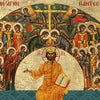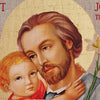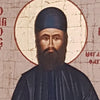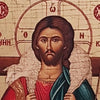The importance of icons in the Orthodox Christian Faith
![]()
Icons play a very important role in the Orthodox Christian Faith. Beautiful, ornate hagiographic icons are described as the “windows to the kingdom of God”. Orthodox icons are used both inside the church, as an integral part of the expression of faith, as well as privately in peoples’ homes. For the faithful Orthodox Christian, the icon consists a form of prayer and a "means" of praying. Most icons usually depict themes from Christ's life, the life of His mother Mary and scenes from the Bible or from the lives of Saints.
For the Orthodox Faith, icons are an integral part of the tradition of our Church from its establishment until today, with icons being perhaps the most characteristic feature of our churches. During the first years that Christianity was spread, the depictions of saints, of their stories, of Jesus and of Virgin Mary were very limited, mostly in wall paintings - well known among them are the catacombs under Rome which are full of frescoes -, due to the impending persecutions. The figures and the scenes portrayed in the icons or the wall paintings, were based on oral information passed from mouth to mouth among the faithful, while the first icon is attributed to Luke the Evangelist and depicts Virgin Mary.
The recognition of Christianity by the Roman Emperor Constantine the Great, was the beginning of the "adornment" of churches with icons, which until then were limited to private use only.
Icons: a subject of conflict
Icons became a subject of theological and political conflict which caused unrest in the Byzantine Empire in the 8th century and the first half of the 9th century, separating the faithful to icon lovers (Iconphiles or Iconolaters) and to those battling icons (iconoclasts). Exaggerations in the expression of these two currents led to intense and fierce disputes between the two sides, which ended in 842 with the actions taken by Theodora, Byzantine empress, spouse of Theophilos, who restored icons in churches and monasteries and brought a final end to Iconoclasm. Iconoclasts could not comprehend that an icon does not reveal the nature of the one depicted, but one's face and not one's “divine” nature. For the Orthodox Christian, the icon does not “reveal” the face, but becomes the means, the bridge between the faithful and the Divine. Orthodox Christians do not worship the icon, they bow before it, “salute” it with their attitude through which they establish a spiritual bond with the content of their faith. According to Saint John of Damascus an icon educates us, it leads us to paths of knowledge and “narrates” church’s “life” through its portrayals of faces or scenes.
-
Posted in
Theological Issues

